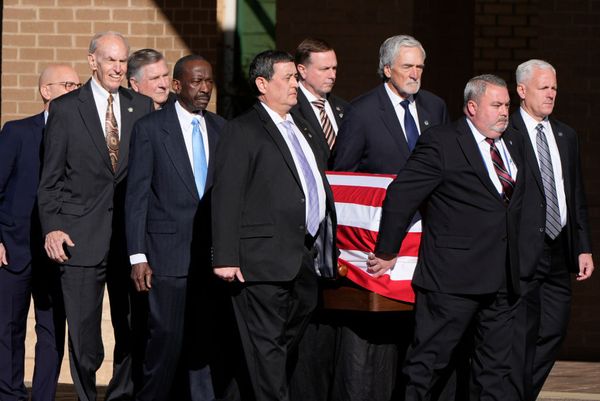
Inability to purchase housing is creeping into the middle class as well as increasing among low income earners and the young — and nothing will change unless politicians are prepared to take difficult decisions to address tax breaks, NIMBYism and poor quality building.
It is driving growing wealth inequality in Australia, entrenching wealth, and acting as a significant handbrake on productivity as the economy continues to develop service and knowledge-based industries that benefit from clustering.
They’re the conclusions offered last night by Brendan Coates of the Grattan Institute in an excellent speech that elevates him to the esteemed company of Saul Eslake as one of the great truthtellers of Australia’s housing disaster.
Coates doesn’t use the word “disaster” but he repeatedly refers to the nightmare that housing affordability has become for many Australians — no longer just for the young but for the middle-aged and an increasing number of retirees.
The failures of housing policy in Australia are regularly traversed by commentators and economists, but few have done so as well as Coates, who also provides an overview of how economists have looked at land throughout history and how it fell out of the economic spotlight in the 20th century. He argues that the rise of knowledge-based service industries has once again put a premium on land as businesses cluster in major cities to secure the benefits of interaction internally and externally — even if the pandemic has enabled a greater degree of remote working.
What has driven rising house prices in Australia, however, has been a toxic combination of factors: the long-term decline in interest rates that has given buyers more firepower, and the failure of the housing market to respond effectively to the increase in immigration after 2000.
Until then, Australia’s housing markets had handled increases in immigration without surging house prices — most notably after World War II. That’s now changed, and the result is fewer people being able to afford housing and much higher rents for those unable to buy.
The main culprit, Coates argues, is land use planning laws that enable local residents to block and restrict medium and high-density developments, while the potential beneficiaries of that housing, other than the developer concerned, have no say. He suggests many planning restrictions are worthwhile, but heritage restrictions appear to have unclear benefits compared to the costs of higher housing and rents they contribute to.
Coates wants significantly stronger building codes, so that residents are assured they’ll be living next to quality, long-term housing if development applications are approved, and he wants governments to follow the ACT model and do much more to capture the windfall benefits of zoning changes so that the community, as well as developers, enjoy the benefits of regulatory change. And he suggests the Commonwealth offer incentive payments to the states to accelerate the level of dwelling construction (as well as driving more social housing construction, as the Albanese government plans to do).
The “nightmare” has significant social and economic impacts. For overall wealth, rather than just income, we have become significantly more unequal between 2003 and 2020 — income after housing costs for the lowest quintile of income earners has increased by less than a third of the rate of increase for the highest quintile. Coates argues that much of the growth in the capital share of income at the expense of the labour share of income has been riven by rising housing costs. And inevitably, rising housing costs entrench wealth and privilege — wealthier families pass on more assets to their children and relatives.
Moreover, the biggest falls in home ownership across all age groups have occurred in middle-income brackets — housing affordability is increasingly a problem for the Australian middle class.
Coates also details how it has stifled productivity. Higher land prices make it harder for businesses and workers to move easily, and increase the cost of locating to the most economically efficient locations. Long commutes reduce (usually female) workforce participation. And carrying a large mortgage makes people less inclined to change careers or jobs, or take risks such as establishing a new business.
In addition to the necessary abolition of negative gearing and reducing the capital gains tax discount, Coates suggests making renting more attractive (particularly through longer leases) as well as lifting rent assistance payments and the Commonwealth bringing an end to many years of state government dodging of their responsibilities for social housing, by making Commonwealth social housing funding conditional on matching funding by the states.
Many of these proposals have been heard before, as has much of the housing debate itself. We’re at the stage where politicians are paying lip service to the fact that housing policy in Australia is a disaster, but unwilling to take serious action for fear of upsetting vested interests. Only a steady focus on the profound damage it is doing to Australian society is likely to push the level of community outrage to the level where politicians will be forced to move beyond lip service. Coates’ speech is another step.
Have you been affected by the housing affordability crisis? What do you think of Coates’ proposals? Let us know your thoughts by writing to letters@crikey.com.au. Please include your full name to be considered for publication. We reserve the right to edit for length and clarity.







